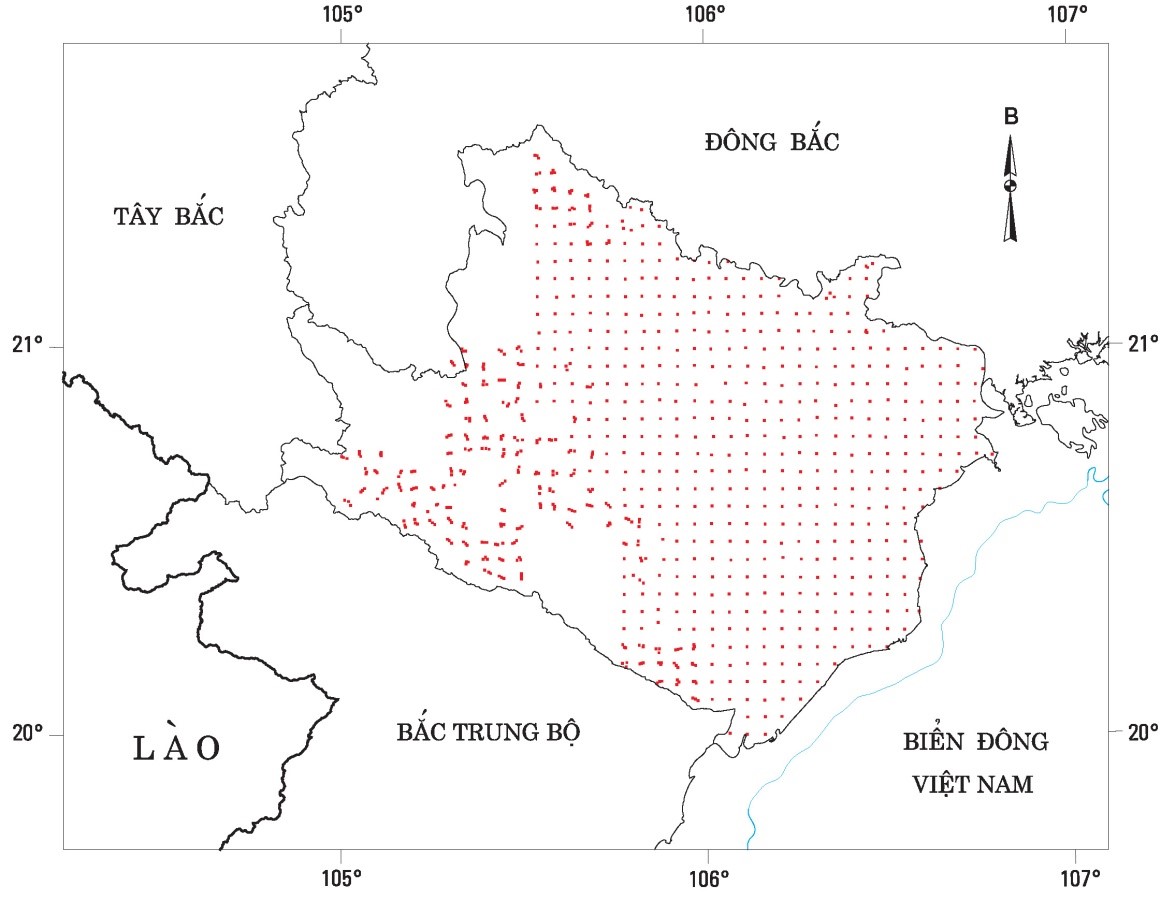07. PHÂN LOẠI ĐỐI TƯỢNG CHIẾT TÁCH LỚP PHỦ BỀ MẶT TẠI KHU VỰC CÔNG VIÊN ĐỊA CHẤT TOÀN CẦU NON NƯỚC CAO BẰNG DỰA TRÊN NỀN TẢNG ĐIỆN TOÁN ĐÁM MÂY
Giới thiệu
Dữ liệu lớp phủ bề mặt là dữ liệu quan trọng phục vụ cho việc quản lý và giám sát công viên địa chất. Trước đây việc chiết tách dữ liệu lớp phủ từ dữ liệu viễn thám được thực hiện bằng các phần mềm thương mại. Do giới hạn bởi phần cứng của máy tính và các thuật toán nên các phần mềm thương mại làm tăng thời gian và chi phí thành lập bản đồ. Sự xuất hiện của nền tảng điện toán đám mây Google Earth Engine (GEE) vào năm 2010 mang lại bước đột phá trong phân tích và xử lý ảnh viễn thám đã khắc phục những nhược điểm đó. Vì vậy, trong bài báo này, công nghệ điện toán đám mây được nghiên cứu để xây dựng dữ liệu lớp phủ vào năm 2019 cho khu vực công viên địa chất toàn cầu Non Nước Cao Bằng. Kết quả phân loại cho ra dữ liệu 6 loại lớp phủ bao gồm: lúa, đất nông thôn, rừng sản xuất, rừng tự nhiên, lúa, nước và đất trồng khác. Độ chính xác phân loại khá tốt, độ chính xác tổng thể là 83,2%, hệ số Kappa là 0,78. Kết quả phân loại này hoàn toàn phục vụ tốt cho nhiệm vụ quản lý và giám sát tại khu vực công viên địa chất.
Toàn văn bài báo
Trích dẫn
2. Blaschke, T (2010), Object based image analysis for remote sensing. ISPRS J. Photogramm. Remote Sensing, 65,2–16.
3. Campos-Taberner, M.; García-Haro, F.J.; Camps-Valls, G.; Grau-Muedra, G.; Nutini, F.; Crema, A.; Boschetti, M. (2016), Multitemporal and multiresolution leaf area index retrieval for operational local rice crop monitoring. Remote Sens. Environ, 187, 102–118.
4. García-Haro, F.J.; Campos-Taberner, M.; Muñoz-Marí, J.; Laparra, V.; Camacho, F.; Sánchez-Zapero, J.; Camps-Valls, G. (2018), Derivation of global vegetation biophysical parameters from EUMETSAT Polar System. ISPRS J. Photogramm. Remote Sens, 139, 57–74.
5. Gislason, P. O., Benediktsson, J. A., & Sveinsson, J. R. (2006). Random Forests for land cover classification. Pattern Recognition Letters, 27(4), 294–300.
6. Gonzalo Mateo-García , Luis Gómez-Chova, Julia Amorós-López, Jordi Muñoz-Marí and Gustau Camps-Valls (2018), Multitemporal Cloud Masking in the Google Earth Engine, Remote sensing.
7. Lalit Kumar and Onisimo Mutanga (2018), Usage, Trends, and Potential, Remote sensing
8. Masoud Mahdianpari, Bahram Salehi, Fariba Mohammadimanesh, Saeid Homayouni and Eric Gill (2019), The FirstWetland Inventory Map of Newfoundland at a Spatial Resolution of 10 m Using Sentinel-1 and Sentinel-2 Data on the Google Earth Engine Cloud Computing Platform, Remote sensing
9. Onisimo Mutanga, Lalit Kumar (2019), Google Earth Engine Applications, Remote sensing
10. Radhakrishna Achanta and Sabine S¨usstrunk (2017) Superpixels and Polygons using Simple Non-Iterative Clustering, IEEE Conference on Computer Vision and Pattern Recognition (CVPR)
11. Waske, B., and Braun, M. (2009). Classifier ensembles for land cover mapping using multitemporal SAR imagery. ISPRS Journal of Photogrammetry and Remote Sensing, 64(5), 450–457.





